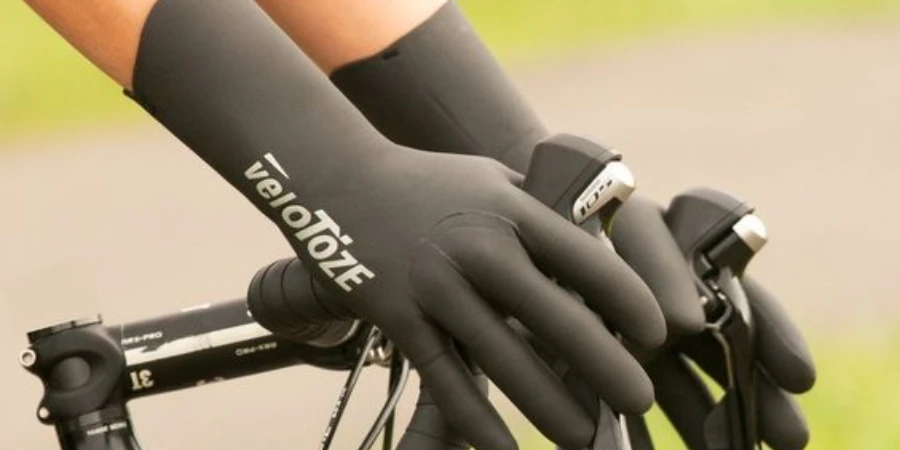Yoga is a fantastic way to improve your strength, flexibility, and overall health. Nonetheless, buyers will need proper equipment for practicing yoga to increase comfort and to prevent harming their bodies. In such cases, yoga practice mats are indispensable.
Considering the numerous types of mats available, finding the ideal yoga mat in the market can be a challenge. This article offers insights into the key factors to consider when selecting a suitable yoga mat.
Table of Contents
Yoga mats market share and size
Types of yoga mats
How to select ideal yoga mats
Summary
Yoga mats market share and size
Health consciousness among the rapidly growing world population is key to the steady rise in the demand for yoga mats. Globally, the yoga mat market is segmented based on material, distribution channel, end-user, and region. Major manufacturers focus on creating yoga mats with improved comfort and convenience. Also, the various materials selected are geared towards meeting consumers’ preferences as the producers gain a competitive advantage in the worldwide market. Some key players include ADIDAS AG, Jade Yoga, Ecoyoga Ltd, and Aurorae Yoga.
Business Wire reported growth in the yoga mat market value from USD 10.76 billion in 2021 to USD 11.37 billion in 2022. Further, it was projected to reach USD 14.36 billion by 2026. The increase is based on an annual continuous growth rate of approximately 6.0% from 2022 to 2026. The surge in the market value is ascribed to the rise in the need to eliminate cases of obesity associated with various health issues like diabetes and hypertension.
Based on material, the PVC segment accounted for more than one-third of the yoga mat market share. This is because of its high comfort level, cost-effectiveness, and availability. The end user segment had the household segment holding a significant market share. Specialty stores dominated the yoga market share among other distribution channels. Regionally, Asia-Pacific registered the largest market share due to the increased adoption and use of yoga mats in countries like Australia, Japan, and China.
Types of yoga mats
1. Basic sticky yoga mats
Basic sticky yoga mats are the most common type of yoga mats made from various materials like TPE, PVC, and rubber. They have a non-slip and smooth surface that offers a good grip for the hands and feet. This helps maintain stability during yoga exercises. The mats are relatively lightweight and can be easily carried around to yoga classes or home practices. Generally, basic sticky yoga mats are suitable for beginners, especially the ones seeking affordable options that come with convenience.
2. Plastic elastomer yoga mats
As the name suggests, plastic elastomer yoga mats are made from a plastic material called elastomer. This elastomer is a synthetic polymer with elastic properties suitable for making yoga mats. The elastomer is a resilient and tough component that easily withstands tearing or cracking. In this case, it guarantees the durability of the yoga mat. As such, plastic elastomer yoga mats are perfect for practitioners who prefer long-lasting mats.
They are slip-resistant, and the mat surfaces are patterned or textured to secure grip for hands and feet during yoga poses. Additionally, the elastomer is non-porous, and thus it does not absorb odors or moisture. As a result, the mats are easy to clean and maintain by simply wiping down or spraying with a yoga mat cleaner.
3. Travel yoga mats
Travel yoga mats are compact, lightweight yoga mats produced for yogis who are always on the move. They are relatively thinner and more portable compared to regular yoga mats. As such, they are suited for practicing outdoor yoga or when traveling. The mats are easily foldable to be packed in a backpack or suitcase. Also, they are smaller than traditional yoga mats, and thus they can be used in small spaces like airport lounges, hotel rooms, and areas without full-size yoga studios. Buyers should consider factors like weight and cushioning to find the right travel yoga mat.
4. Cotton and hemp yoga mats
Cotton and hemp yoga mats are produced using natural fibers. Hemp and cotton are eco-friendly materials making them suitable for yogis who are generally concerned about environmental protection as they practice yoga. These materials offer sustainability as they are renewable and natural, requiring less energy and water to produce quality yoga mats.
Being biodegradable, they break down in the environment over time. The mats are soft and absorbent, providing more comfort, cushioning, and reducing injuries during yoga poses. Buyers who opt for these yoga mats must use grippy accessories to enhance traction when wet with sweat.
5. Natural rubber yoga mats
Natural rubber yoga mats are made from an eco-friendly and natural material called rubber. The material comes from the sap of rubber trees and is used to make yoga mats for yoga practitioners who value the impact of their yoga practices on the environment. The yoga mats have the slip-resistance feature as rubber provides a grippy surface even when the mat is wet. Rubber resists wear and tear due to its resilience and tough nature; hence the mats are durable. Buyers keen on their needs should also consider other factors like texture and thickness to get the right option.
How to select ideal yoga mats
1. Style and design
Considering style and design, yoga mats are produced with an extensive range of appearances. Personal preferences enable some buyers to consider bright colors and bold patterns that show vibrance in design. Others just want simpler designs that are understated. Buyers should choose yoga mats that resonate with their motivation and inspiration during practice. Other designs show specific types of yoga, like restorative or hot yoga. Restorative yoga mats are thicker in design and are more cushioned to offer greater comfort. As such, buyers should consider designs that support their practice.
2. Cost
On average, yoga mats cost from less than USD 10 to over USD 200. The cost varies based on material, brand, features, and sizes. Basic PVC yoga mats are the least expensive, with a price range of USD 10 to 30. Eco-friendly yoga mats made from cork and natural rubber have a price range of USD 30 to 100. High-performance yoga mats are designed for advanced yogis and specific yoga styles that cost around USD 50 and 150. Additionally, designer yoga mats have unique patterns and are most expensive from around USD 50 to 200 or more. Buyers should select yoga mats depending on their budget and the features they can offer.
3. Thickness
Buyers should always consider comfort, stability, portability, and durability when choosing yoga mats based on thickness. A thicker mat offers more cushioning and support, which benefits buyers with joint issues. Thinner yoga mats are generally lightweight and easier to carry, while thicker mats are cumbersome. The most common thickness range falls between 0.0625 and 0.5 inches on average. In this case, buyers should consider the kind of yoga they practice and personal comfort preferences.
4. Texture
Texture affects stability and grip during yoga practices. Non-slip surfaces provide better grip, which prevents sliding and slipping during exercises. Some people prefer smooth surfaces for stability and comfort as they practice yoga. Also, different materials affect the texture of the yoga mat. Mats made from natural rubber have textured surfaces as opposed to those from PVC, which have smoother surfaces. Buyers who intend to practice hot yoga which involves sweating prefer textured surfaces for better traction.
5. Material
The material used in producing yoga mats matters as it determines the mat’s durability, grip, sustainability, and general performance. PVC makes lightweight and durable yoga mats, but they are not biodegradable; hence they can emit toxic chemicals when disposed of. Thermoplastic elastomer yoga mats are non-toxic, lightweight, and durable. Mats made from natural rubber offer good traction and cushioning, although they can be heavier and more expensive. Additionally, mats made from jute are eco-friendly and provide good traction and durability. Notably, buyers should consider potential sensitivities or allergies they may have to certain materials.
6. Size
Some factors considered under size when selecting yoga mats include height, type of yoga practice, and space and comfort preferences. The standard yoga mat size is around 68 inches in length and 24 inches in width. It is suitable for buyers with a height of about 6 feet tall. If buyers are taller than 6 feet, they should opt for longer mats up to 72 inches. They give more room for stretching. In addition, the travel size requires a compact yoga mat that is around 60 inches or shorter. This allows for easier packing and transporting.
Summary
Buyers should select the right yoga mat to enhance their practice and overall experience. The abovementioned factors in this guide should help the buyers seek out and select suitable yoga mats. They should also consider personal needs based on where they will use their yoga mats, for instance, outdoor sessions or hot yoga. To acquire quality yoga mats, visit Alibaba.com for a range of listings.




